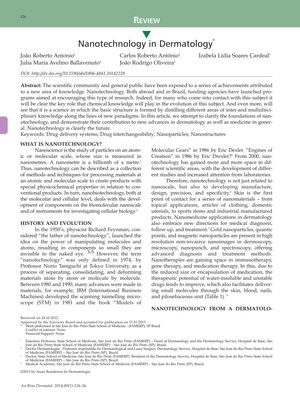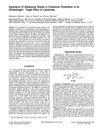Nanotechnology in Dermatology
January 2014
in “
Anais Brasileiros De Dermatologia
”
nanotechnology nanoparticles drug delivery systems skin conditions cancer therapy drug penetration bioavailability efficacy corticoids retinoids titanium dioxide zinc oxide sunscreens scalp diseases alopecia hair follicles minoxidil finasteride toxicological studies safety standards nanotech nano particles drug delivery skin treatments cancer treatments drug absorption drug effectiveness steroids vitamin A derivatives TiO2 ZnO sunblock hair loss hair roots Rogaine Propecia safety research

TLDR Nanotechnology in dermatology shows promise for better drug delivery and treatment effectiveness but requires more safety research.
The document from 2014 reviews the use of nanotechnology in dermatology, emphasizing its potential in drug delivery systems, treatment of skin conditions, and cancer therapy. Nanoparticles, ranging from 1 nm to 100 nm, are used to enhance drug penetration through the skin and target specific conditions. A study by Friedman et al. from 2011 with a 23% response rate from 100 dermatology professionals in the USA indicated a lack of education on nanotechnology, highlighting the need for further research and safety evaluations. Nanotechnology applications in dermatology include improving bioavailability and efficacy of drugs like corticoids and retinoids, and using titanium dioxide and zinc oxide nanoparticles in sunscreens. For scalp diseases and alopecia, nanoparticles have shown to increase drug permanence in hair follicles, with treatments like minoxidil and finasteride showing improved efficacy when delivered through nanoparticles. Despite the promising applications, the document stresses the need for specific toxicological studies and safety standards for human use, as well as further understanding of the environmental and health impacts of nanoparticles.







